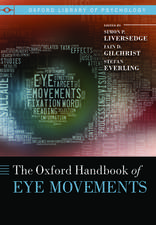Brain Protection: Morphological, Pathophysiological and Clinical Aspects
Editat de K. Wiedemann, S. Hoyeren Limba Engleză Paperback – 7 dec 2011
Preț: 364.33 lei
Preț vechi: 383.50 lei
-5% Nou
Puncte Express: 546
Preț estimativ în valută:
69.72€ • 75.71$ • 58.57£
69.72€ • 75.71$ • 58.57£
Carte tipărită la comandă
Livrare economică 22 aprilie-06 mai
Preluare comenzi: 021 569.72.76
Specificații
ISBN-13: 9783642691775
ISBN-10: 3642691773
Pagini: 188
Ilustrații: XI, 168 p.
Dimensiuni: 170 x 244 x 10 mm
Greutate: 0.31 kg
Ediția:Softcover reprint of the original 1st ed. 1983
Editura: Springer Berlin, Heidelberg
Colecția Springer
Locul publicării:Berlin, Heidelberg, Germany
ISBN-10: 3642691773
Pagini: 188
Ilustrații: XI, 168 p.
Dimensiuni: 170 x 244 x 10 mm
Greutate: 0.31 kg
Ediția:Softcover reprint of the original 1st ed. 1983
Editura: Springer Berlin, Heidelberg
Colecția Springer
Locul publicării:Berlin, Heidelberg, Germany
Public țintă
ResearchCuprins
Structural Aspects of Energy Failure States in the Brain.- Morphological Aspects of Brain Protection in Experimentally Induced Hypoxia.- Survival of Cortical Neurons After Ischemia: Dependency on Severity and Duration.- Membrane Stabilization and Protection of the Ischemic Brain.- Recovery From Disturbed Cerebral Ion Homeostasis Following Severe Incomplete Ischemia and Modification by the Metabolic Depressant Drug Etomidate.- Comparative Evaluation of Barbiturate and CA++Antagonist Attenuation of Brain Free Fatty Acid Liberation During Global Brain Ischemia.- Alterations in Whole Brain Cyclic-AMP and Cerebral Cortex Na-Inducible Cyclic-AMP in Rats During and After Complete Global Ischemia.- Pathophysiology and Pathobiochemistry of Acute Brain Infarction in the Gerbil: The Influence of Metabolic Inhibition.- A Dog Model to Evaluate Post-Cardiac Arrest Neurological Outcome.- Cortical Glucose and Energy Metabolism During Complete Cerebral Ischemia and After Recovery.- Monitoring of Cerebral Ischaemia in Man.- Clinical Trials of Brain Protection: Problems and Solutions.- Pharmacological Effects in Protective and Resuscitative Models of Brain Hypoxia.- The Clinical Use of Hypnotic Drugs in Head Injury.- Indications for Cerebral Protection.- Prophylaxis of Cerebral Ischemic Damage From Vasospasm After Subarachnoid Hemorrhage.- Brain Protection by Barbiturate After Head Injury? Clinical and Experimental Results.- Thiopentone in the Treatment of Severe Head Injury: Is Raised Intracranial Pressure the Sole Indication for Its Use?.- Brain Resuscitation in Children: Current Indications and Future Directions.- Statement and Conclusions.















